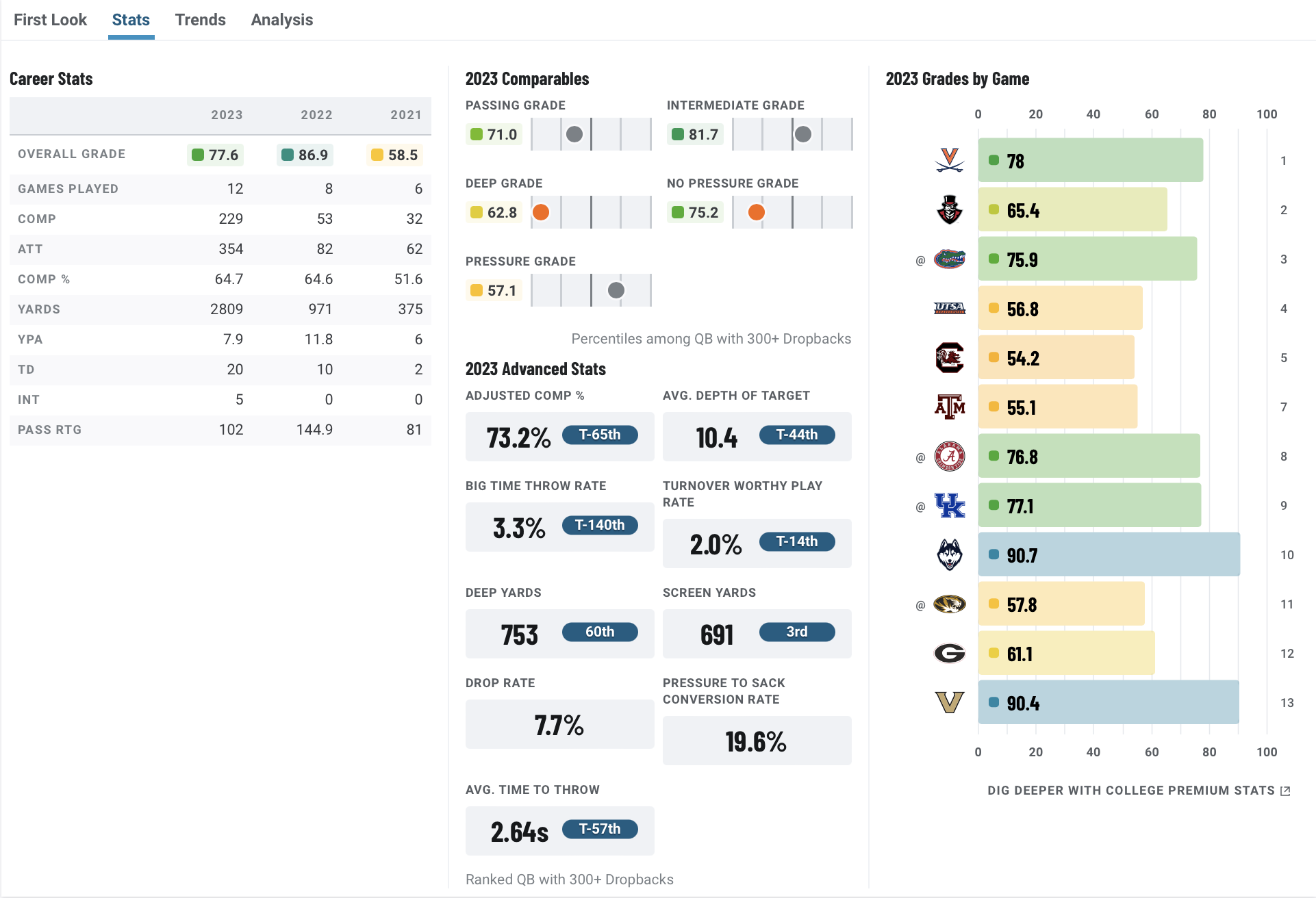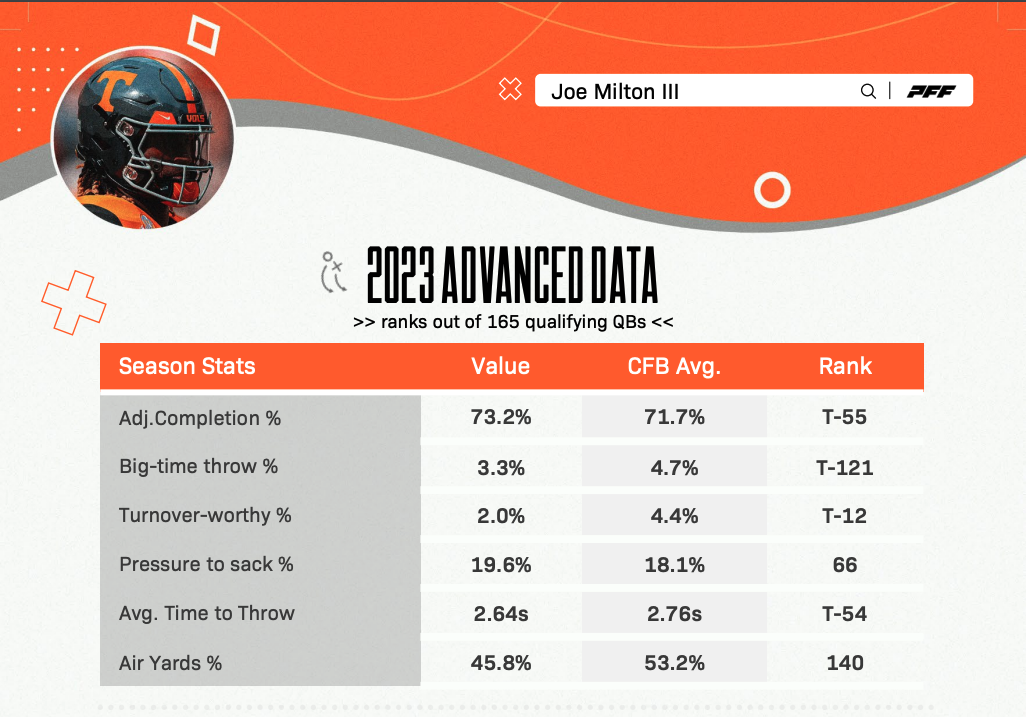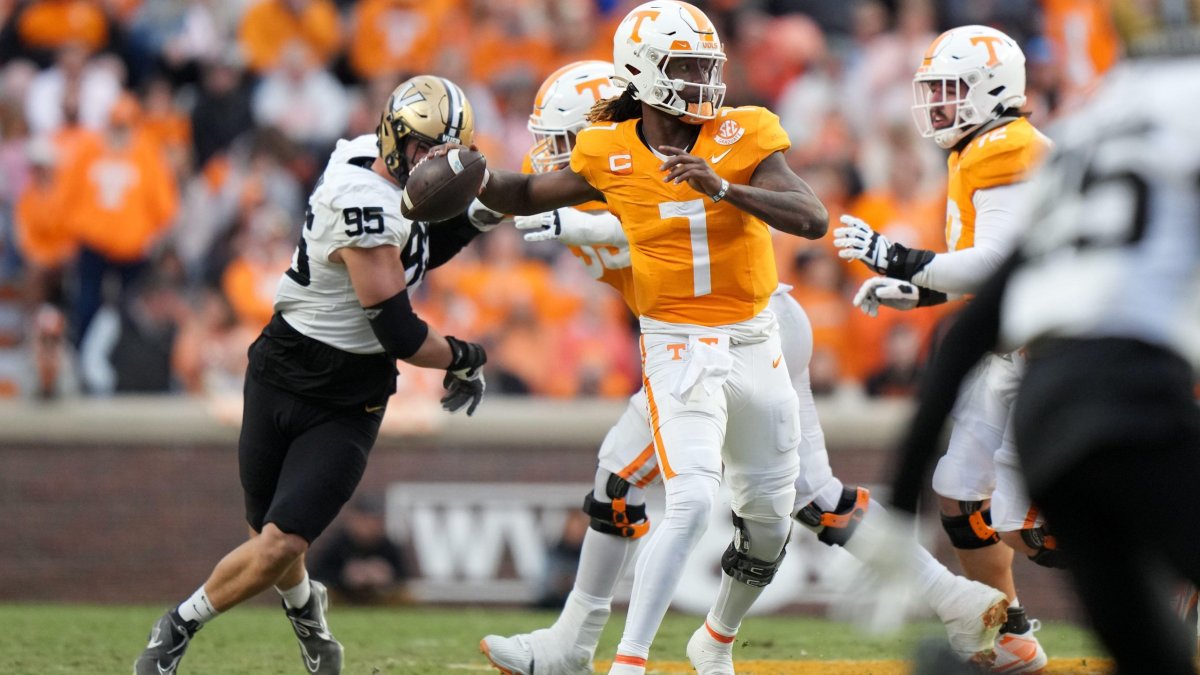The 2024 NFL Draft is fast approaching. The PFF big board is live, mock draft season is in full swing and the 2024 NFL Scouting Combine has wrapped up.
This year's draft presents an exciting quarterback class chock full of big names. USC's Caleb Williams headlines the group as one of the nation's premier playmakers, but North Carolina's Drake Maye, LSU's Jayden Daniels, Michigan's J.J. McCarthy and Oregon's Bo Nix have all been taken in the first round of recent mock drafts.
Let's look at Tennessee‘s Joe Milton III, who will arguably have the strongest arm in the NFL the moment he steps foot on the field.
Click here for more draft tools:
2024 Mock Draft Simulator | 2024 Big Board | 2024 Draft Guide
2024 Player Profiles | 2024 Mock Drafts | NCAA Premium Stats
SCOUTING SUMMARY
Milton is as physically gifted as they come at 6-foot-5 and 235 pounds with good mobility and a cannon of an arm. He operates almost exclusively from the shotgun in Vol’s wide formation vertical offense. His trump card is his arm talent. He is also useful in the power/RPO run game.
However, he still has a ways to go as a passer before becoming a potential NFL starter. His feet are heavy, and he can stop moving when he's scanning the field. He also tends to get tunnel vision on primary reads and fails to move on in his progressions. His accuracy when throwing the fastball can be good, but his overall ball placement with touch is far too inconsistent.

WINS ABOVE AVERAGE
WAA represents the number of wins a player is worth over an average college football player and is a metric that evaluators can utilize to assess performance. It combines how well a player performed in each facet of play (using PFF grades) and how valuable each facet is to winning football games. The result is a first-of-its-kind metric that allows for cross-positional valuation and predicts future value at the player and team levels.
HOW MILTON RANKS IN THE STABLE METRICS
The most stable facets of quarterback play are those with the biggest sample sizes — even though they intuitively seem “easier.” When projecting a quarterback’s future output, their performance from a clean pocket, on early downs and with no play action should be weighted heavily, and these are strong components when projecting PFF’s Wins Above Replacement metric. Good quarterbacks dominate these situations, while lesser quarterbacks rank near the bottom of the league. Negatively graded plays are also highly correlated from year to year, meaning the quarterback is largely in control of their negatives, while their positive plays may fluctuate due to supporting cast and play calling.
Compared to other players with PFF college data, Milton’s metrics in the most predictive of data subsets measured up near the bottom of the pack.
While possessing rare arm strength, Milton remains useful in the quick game. Over the last two seasons, he has recorded a 91.1% adjusted completion percentage, 10th among all qualified quarterbacks.

MILTON’S PROJECTIONS
In league-average circumstances, here are Milton’s projections for yards per attempt and completion percentage as a rookie:
Let’s look at how Milton does when we make his situation better. With a low pressure rate, high play-action rate and more down-the-field looks, things slightly improve, but still remain well below league average.
Let’s also look at how Milton does when we make the situation less favorable. With a high pressure rate and low play-action rate, things break down. Milton earned just a 57.3 PFF grade under pressure in college, and he projects very similarly in his rookie year.
BOTTOM LINE FROM PFF's 2024 NFL DRAFT GUIDE
Miton has NFL-level tools but lacks the processing, instincts and accuracy to be considered a potential starter in his current state.




 © 2024 PFF - all rights reserved.
© 2024 PFF - all rights reserved.